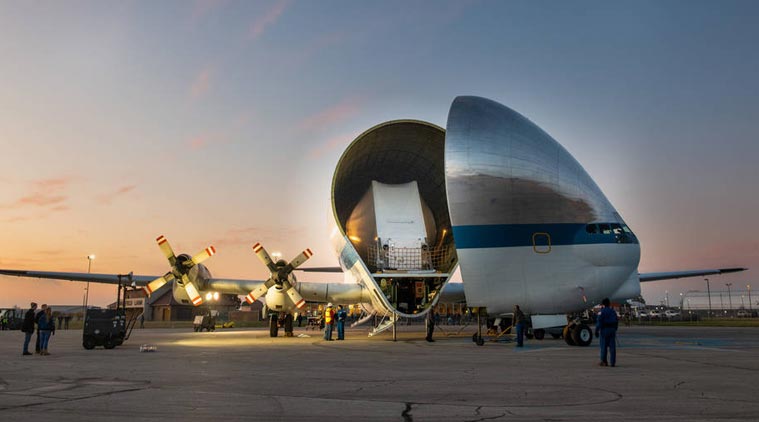
Check it out: NASA’s Super Guppy aircraft delivers the Orion spacecraft
NASA's Orion Spacecraft for the Artemis 1 mission to the moon has arrived in Ohio in the space agency's Super Guppy aircraft. The spacecraft arrived at Mansfield Lahm Airport and a crowd of nearly 1500 had gathered at the flight line to await the aircraft.
by Tech DeskNASA’s Orion Spacecraft for the Artemis 1 mission to the moon arrived in Ohio in the space agency’s Super Guppy aircraft. The spacecraft arrived at Mansfield Lahm Airport, and a crowd of nearly 1500 had gathered at the flight line waiting for its big arrival, given even the Super Guppy is a sight to behold.
The Super Guppy aircraft is NASA’s super big plane, which is capable of carrying large loads, and does not look like a regular cargo plane. It has a lot of space, especially for the kind of loads it is meant to carry and in this case it was a spacecraft.
NASA opened the nose of the Guppy, which revealed the Orion spacecraft inside. The spacecraft was removed from the aircraft and loaded onto a large flatbed trailer to be transported to NASA’s Plum Brook Station for testing. Orion’s construction was completed in two phases inside the world’s largest vacuum chamber, according to NASA’s press release.
NASA explained that testing for the Orion spacecraft will begin with a thermal test, which will last nearly 60 days. Orion’s systems will be powered-on under vacuum conditions to simulate the space environment. The spacecraft will be subject to extreme temperatures, which will range from -250 to 300-degrees Fahrenheit. This is being done to mimic conditions similar to flying in-and-out of sunlight and shadow in space.

The second phase of testing for Orion spacecraft will include an electromagnetic interference and compatibility test for about 14 days. This is to ensure the spacecraft’s electronics work properly when operated.
The Artemis 1 mission is part of a larger series to explore the Moon and beyond. The aim is to put the first woman and the next man on the moon by 2024. Artemis 1 will be an uncrewed flight test.
With Artemis missions, the goal is to eventually get to Mars, though the Moon missions will see NASA and its astronauts exploring the entire surface of Earth’s satellite. NASA says it will rely on both human and robotic explorers. As part of the Artemis missions, NASA plans to send astronauts to new locations, starting with the lunar South Pole.